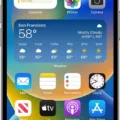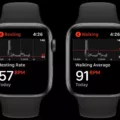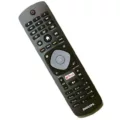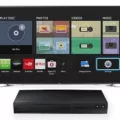Television color bars are an essential tool for maintaining accurate chroma and luminance levels in modern video displays. Whether you are working with a CRT, LCD, LED, plasma, or any other type of video display, color bars provide a reference or target for calibrating your color and audio levels.
The purpose of color bars is to ensure that your video signal is properly calibrated so that the colors and brightness levels are consistent and accurate. When you use color bars, you can adjust your video display to match the intended color and brightness levels of the original source material.
Color bars are typically presented at 75% intensity, which is a standard level used in the television and film industry. This level ensures that the colors and brightness levels are accurate and consistent, regardless of the type of video display you are using.
In addition to color bars, audio tone is also an important tool for calibrating audio levels. The audio tone is a 1kHz sine wave, which provides a reference point for adjusting audio levels during transmission.
One common issue that can occur with video displays is the DLP rainbow effect, also known as color breakup. This effect appears as a momentary flash of rainbow-like striping, typically trailing bright objects when you look from one side of the screen to the other quickly, or when you quickly look away from the TV to an off-screen object. By using color bars and audio tone, you can help minimize the occurrence of this effect and ensure that your video display is properly calibrated.
Television color bars are an essential tool for maintaining accurate chroma and luminance levels in modern video displays. Whether you are working with a CRT, LCD, LED, plasma, or any other type of video display, color bars provide a reference or target for calibrating your color and audio levels. By using color bars and audio tone, you can ensure that your video display is properly calibrated and that your viewers are getting the best possible viewing experience.

Understanding the Meaning of TV Color Bars
Color bars on TV are a standardized test pattern that is used to calibrate and adjust the chroma and luminance levels of video displays and transmission equipment. These bars consist of a series of vertical bars of different colors and shades, arranged in a specific pattern. The colors used in the bars are usually red, green, blue, yellow, cyan, magenta, white, and black.
The primary purpose of color bars is to ensure that video displays and transmission equipment are producing accurate and consistent colors and brightness levels. By comparing the colors and brightness of the bars on a display or transmission signal to a known standard, technicians can adjust the equipment to produce accurate and consistent colors and brightness levels.
Color bars are commonly used in the broadcasting industry, as well as in video production, duplication, and transmission. They are also used in consumer electronics, such as TVs and monitors, as a calibration tool for home users who want to ensure that their displays are producing accurate colors and brightness levels.
Color bars on TV are a standardized test pattern used to calibrate and adjust the chroma and luminance levels of video displays and transmission equipment, to ensure accurate and consistent colors and brightness levels.
What Is the Phenomenon of a TV Rainbow Screen Called?
The TV rainbow screen effect is commonly referred to as the DLP rainbow effect or color breakup. This phenomenon is characterized by a momentary flash of rainbow-like striping that is typically observed trailing bright objects on the screen when the viewer quickly looks from one side of the screen to the other, or when they quickly look away from the TV to an off-screen object. The DLP rainbow effect is often associated with digital light processing (DLP) technology, which uses a color wheel to project images onto the screen. It is caused by the rapid transition of the color wheel’s primary colors, which can create a temporary separation of colors that the human eye perceives as a rainbow effect.
The Purpose of Color Bars and Tone
The purpose of color bars and tone is to function as a standard reference or target for the calibration of color and audio levels that are being transmitted from the videotape. The color bars are presented at 75% intensity, and they offer a consistent and uniform reference point for color calibration across different devices and systems. This ensures that the color reproduction is accurate and consistent across all screens or displays. The audio tone, which is a 1kHz sine wave, serves as a reference point for audio calibration. It helps to ensure that the audio levels are consistent and balanced, regardless of the type of equipment used for playback. Both color bars and tone are essential tools for ensuring that the quality of the transmitted content is of the highest standard, and they are used in a variety of broadcasting and production settings to ensure accurate and consistent color and audio reproduction.
Conclusion
TV color bars have proven to be an essential tool in maintaining accurate chroma and luminance levels in various video displays and transmission equipment. These bars serve as a reference or target for the calibration of color and audio levels, ensuring that the transmitted content is of high quality and consistency. Additionally, the use of color bars at 75% intensity and audio tone at 1kHz sine wave has become a standard practice in the industry. While the DLP rainbow effect or color breakup may cause momentary distraction, the benefits of using color bars far outweigh any minor issues. As technology continues to advance, it is likely that color bars will remain an integral part of the video production and transmission process.








